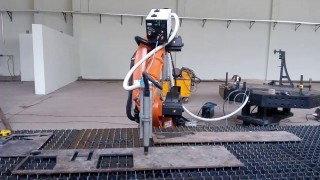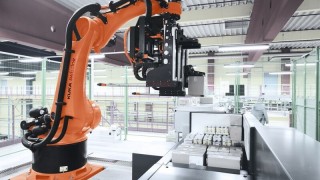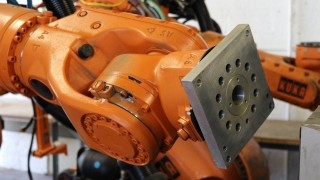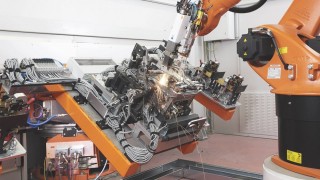Dear Mr. Traikov, our readers would be happy to learn more about your experience with the integration of robotic systems?
I have been dealing with the optimization of robotic systems for over 8 years. This includes fiber optics, BUS communication cables, robotic systems power supply, preliminary analysis of customer processes and needs, engineering projects and simulations, needed to implement such solutions.
STAMH has many years of experience, integrating automated warehouse technologies, and in some of the company's projects we use sorting and palletizing robots for items with different volume and weight, thus optimizing and accelerating all processes in the warehouse.
Our experience already shows that big logistics centers with robotic palletizing processes, are more efficient than those, using conventional mechanical systems or do it by hand. It makes them more competitive and efficient.
When and under what conditions can a certain business consider robotization of a part of its processes?
Robots, unlike humans, has 100% workload capacity. They are able to cover a payload range of 40 to 1300 kg, day and night. At the same time, robots are very precise - few people know that industrial robots can work with an accuracy of up to 0.06 mm, which is thinner than human hair.
These characteristics make them suitable for the heavy industry, logistics, manufacturing, soft drinks, beer, dog food, the chemical industry and many, many more.
The implementation of robots is recommended for any business, looking forward process acceleration, 0 errors and a 3 to 5 years return on investment, depending on the specific application.
A business needs to consider robots when a specific repeating function is underperformed by a large number of operators in the warehouse or the production unit. You also need robots when you are looking for constant productivity, because the industrial robot works equally well in the morning, at noon or after hours, whether it has been working for 1, 2, 10 or even 24 hours …
Today, robotic systems and industrial robots can work efficiently in refrigerators with a temperature of -18 C or in foundries where the temperature is extremely high and the environment is not suitable for humans.
We also recommend industrial robots when you work with expensive materials. A painting robot, for example, allows you to save between 25% and 30% of the paint used, while maintaining a high and consistent quality of the painted surfaces.
STAMH also offers automated conveyor systems to increase efficiency in the warehouse. Is the symbiosis between a conveyor and a robot possible and under what conditions?
When a robot operates in a robotic cell, conveyors are mandatory elements of the system, as they deliver and transport the products or packages that will be handled by the robot. The symbiosis between robot and conveyor system is possible thanks to modern software solutions and integrations.
It is interesting to say that our days, robots are able to track one, two or even three conveyor lines simultaneously and up to 20 moving objects on a conveyor line. Even if the conveyor moves at 1.5 m./s., the robot will work precisely.
In conclusion, how do you see the development of automated processes in Bulgarian in the next five years?
The Covid pandemic, social distance requirements and labor shortage are certainly factors, that will force Bulgarian industry to take steps towards robotics.
If until now, four people were needed to put heavy bags on a pallet, our days a robot can process 400 bags per hour, which means about 20 pallets - per hour! Imagine the difference in productivity!
According to a study, published by Oxford Economics, by 2030 robots will occupy 20 million job positions. Our main task at the moment is to find and apply the best of the symbiosis between people and machines.
Learn more about industrial robots and their applications here.







